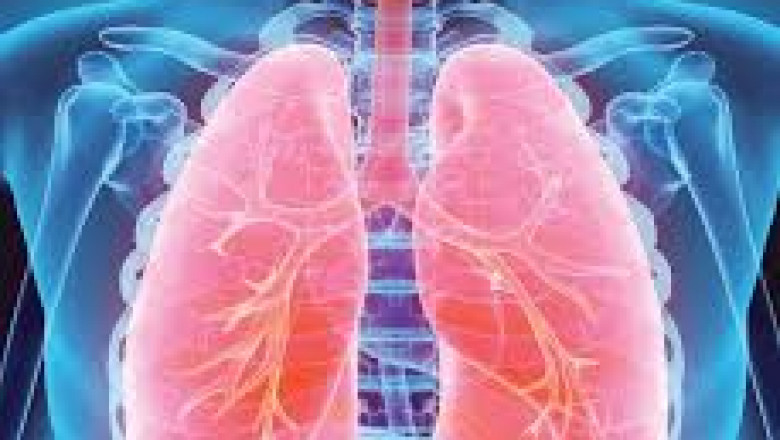views
Respiratory depression, also known as hypoventilation, is a serious medical condition where breathing becomes shallow or slow, leading to inadequate oxygen intake and carbon dioxide removal. Understanding its causes, symptoms, and treatments is vital for early identification and management. Below, we delve into all aspects of respiratory depression to help you stay informed.
What Is Respiratory Depression?
Respiratory depression refers to reduced breathing efficiency, which can result in a lack of oxygen (hypoxia) and excess carbon dioxide (hypercapnia) in the blood. It can be life-threatening if left untreated, as the body’s organs depend on adequate oxygen levels to function properly.
Common Causes of Respiratory Depression
1. Medication-Induced Respiratory Depression
Certain medications, particularly opioids and sedatives, can suppress the central nervous system, reducing the brain’s ability to regulate breathing. Common culprits include:
-
Opioids: Morphine, oxycodone, and fentanyl.
-
Benzodiazepines: Diazepam and lorazepam.
-
Anesthetics used during surgery.
2. Neurological Disorders
Conditions that affect the brainstem, such as strokes, brain injuries, or tumors, may impair the respiratory centers, leading to reduced breathing efficiency.
3. Chronic Respiratory Diseases
Diseases like chronic obstructive pulmonary disease (COPD) and asthma can contribute to respiratory depression, especially during acute exacerbations.
4. Obstructive Sleep Apnea (OSA)
OSA occurs when airway blockages interrupt normal breathing during sleep, potentially causing hypoventilation and reduced oxygen levels.
5. Substance Abuse
Excessive use of alcohol or illicit drugs, such as heroin, can depress the central nervous system, leading to slowed or shallow breathing.
Symptoms of Respiratory Depression
Recognizing the symptoms early can prevent severe complications. Common symptoms include:
-
Slow or irregular breathing.
-
Shallow breaths.
-
Bluish tint to lips or fingertips (cyanosis).
-
Fatigue or lethargy.
-
Confusion or disorientation.
-
Dizziness or lightheadedness.
-
Loss of consciousness in severe cases.
Who Is at Risk?
1. Individuals Using High-Dose Opioids
Patients prescribed opioids for pain management are at higher risk, particularly if they have other respiratory conditions or take additional sedatives.
2. Older Adults
Age-related changes in metabolism and lung function can increase the risk of respiratory depression, especially in combination with medications.
3. Patients with Chronic Illnesses
People with chronic respiratory diseases, obesity, or neurological disorders are more susceptible.
4. Substance Abusers
Those who misuse drugs or alcohol face a significantly higher risk due to central nervous system suppression.
Diagnosing Respiratory Depression
Timely diagnosis is crucial to prevent complications. Healthcare providers use various methods, including:
-
Physical Examination: Assessing breathing patterns, oxygen levels, and overall respiratory function.
-
Pulse Oximetry: Measuring oxygen saturation in the blood.
-
Arterial Blood Gas (ABG) Test: Analyzing oxygen, carbon dioxide, and pH levels in the blood.
-
Imaging Tests: Chest X-rays or CT scans to identify underlying causes like lung disease or structural abnormalities.
Effective Treatments for Respiratory Depression
1. Immediate Interventions
When respiratory depression occurs, quick action is essential to restore normal breathing. Initial steps include:
-
Administering oxygen therapy.
-
Using reversal agents like naloxone for opioid-induced cases.
-
Providing assisted ventilation if necessary.
2. Medications
Depending on the cause, specific medications may be prescribed, such as:
-
Bronchodilators for asthma or COPD.
-
Antibiotics for infections causing respiratory distress.
-
Diuretics for fluid buildup in cases of heart failure.
3. Lifestyle Modifications
Encouraging healthy habits can significantly improve respiratory health:
-
Quitting smoking.
-
Managing weight effectively.
-
Avoiding alcohol and drug misuse.
4. Long-Term Management
For chronic conditions like OSA or COPD, treatments include:
-
Continuous Positive Airway Pressure (CPAP) machines.
-
Pulmonary rehabilitation programs.
-
Regular monitoring and medication adjustments.
Complications of Untreated Respiratory Depression
Failing to treat respiratory depression can lead to severe consequences, including:
-
Hypoxia, which may cause organ damage or failure.
-
Cardiac arrest due to insufficient oxygen levels.
-
Brain damage resulting from prolonged oxygen deprivation.
Preventing Respiratory Depression
1. Proper Medication Use
Always follow prescribed dosages and consult your healthcare provider before taking new medications, especially sedatives or opioids.
2. Regular Medical Check-Ups
Routine health evaluations help identify and manage risk factors like sleep apnea, lung diseases, or neurological disorders.
3. Lifestyle Adjustments
Adopt healthy habits, including regular exercise and a balanced diet, to support overall respiratory health.
4. Education and Awareness
Learn about respiratory depression and its risks, especially if you or a loved one use opioids or have underlying health conditions.
When to Seek Emergency Help
Seek immediate medical attention if you or someone else experiences:
-
Severe difficulty breathing.
-
Bluish discoloration of the skin or lips.
-
Loss of consciousness.
-
Rapidly worsening symptoms.
Conclusion
Respiratory depression is a potentially life-threatening condition that requires timely recognition and treatment. Understanding its causes, symptoms, risks, and effective management strategies can make a significant difference. If you suspect respiratory depression in yourself or someone else, act quickly and consult a healthcare professional. Prevention and proactive care are key to maintaining healthy respiratory function and overall well-being.






















Comments
0 comment